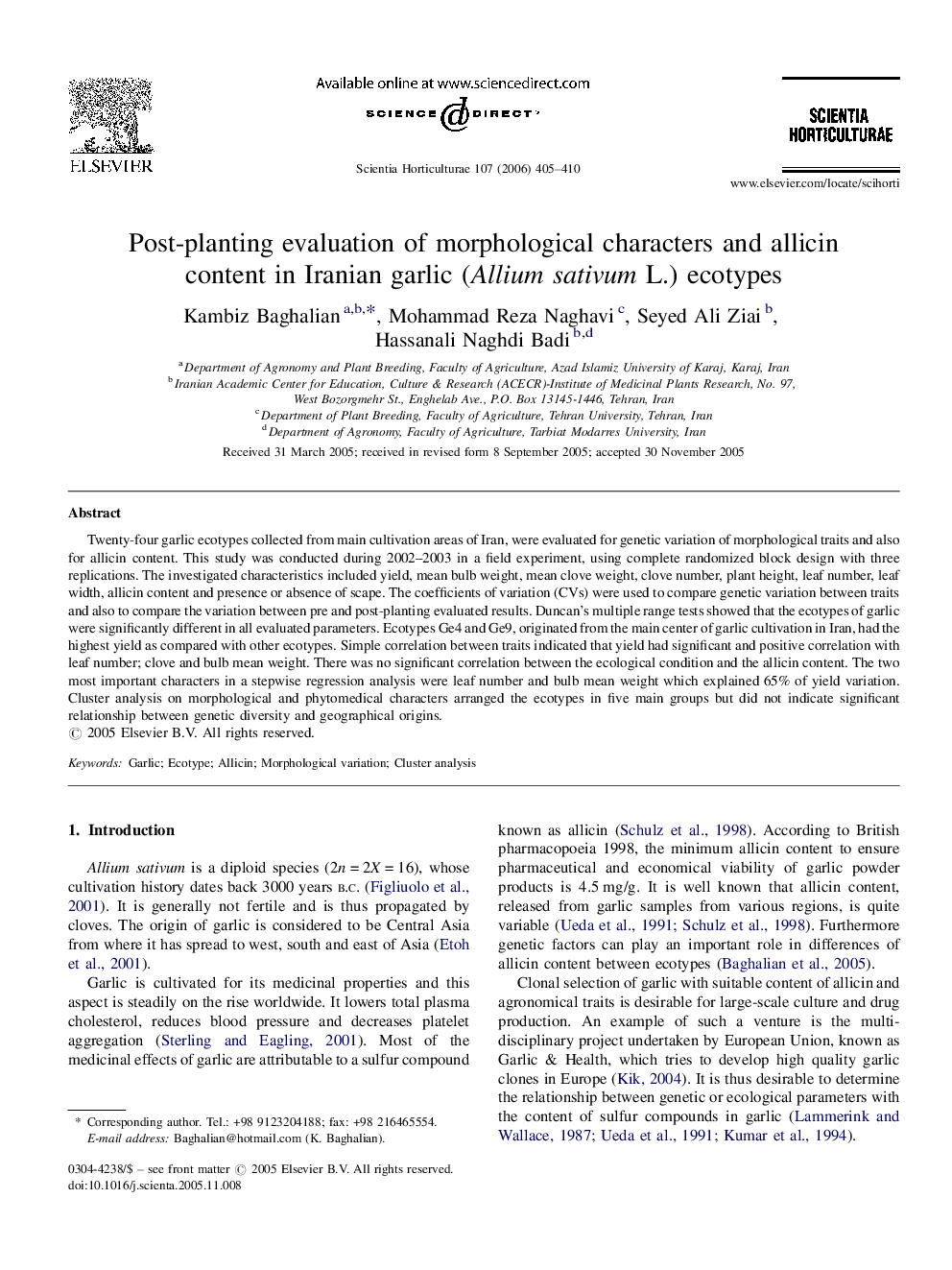| Article ID | Journal | Published Year | Pages | File Type |
|---|---|---|---|---|
| 4570127 | Scientia Horticulturae | 2006 | 6 Pages |
Twenty-four garlic ecotypes collected from main cultivation areas of Iran, were evaluated for genetic variation of morphological traits and also for allicin content. This study was conducted during 2002–2003 in a field experiment, using complete randomized block design with three replications. The investigated characteristics included yield, mean bulb weight, mean clove weight, clove number, plant height, leaf number, leaf width, allicin content and presence or absence of scape. The coefficients of variation (CVs) were used to compare genetic variation between traits and also to compare the variation between pre and post-planting evaluated results. Duncan's multiple range tests showed that the ecotypes of garlic were significantly different in all evaluated parameters. Ecotypes Ge4 and Ge9, originated from the main center of garlic cultivation in Iran, had the highest yield as compared with other ecotypes. Simple correlation between traits indicated that yield had significant and positive correlation with leaf number; clove and bulb mean weight. There was no significant correlation between the ecological condition and the allicin content. The two most important characters in a stepwise regression analysis were leaf number and bulb mean weight which explained 65% of yield variation. Cluster analysis on morphological and phytomedical characters arranged the ecotypes in five main groups but did not indicate significant relationship between genetic diversity and geographical origins.
